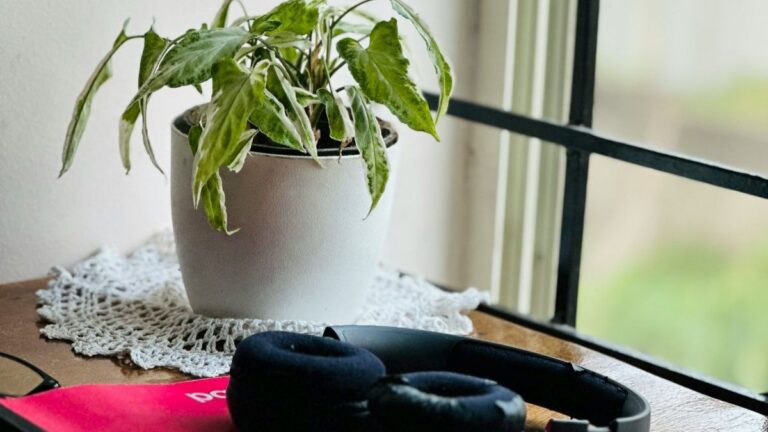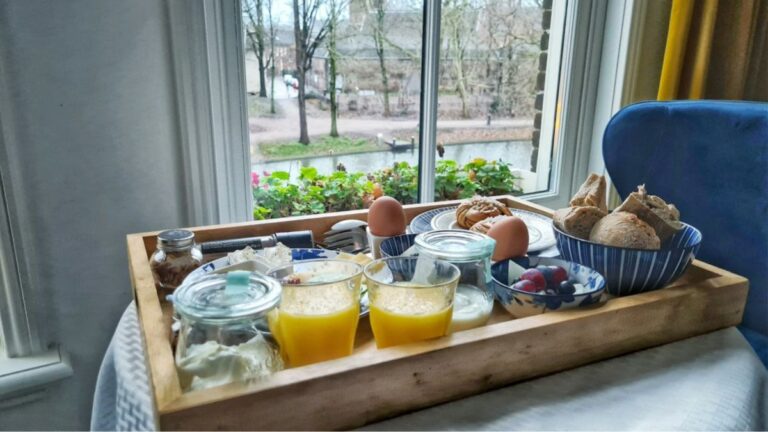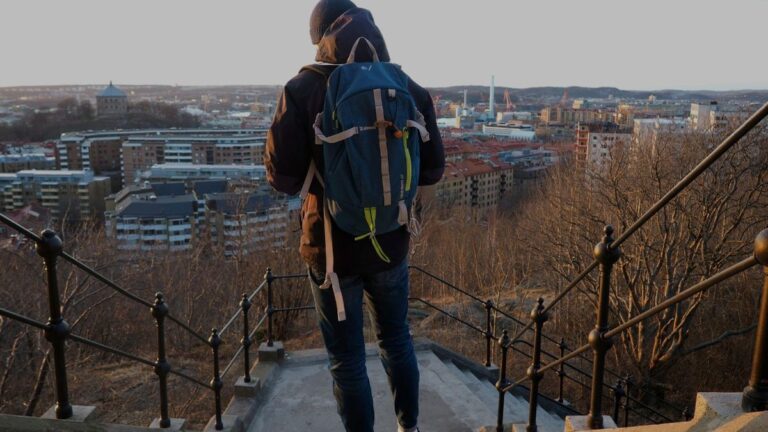Create a Device-Parking Station
Device Parking station? Yes. Some evenings your phone feels magnetized to your hand. A tiny device-parking station breaks the loop. Give your phone a home… charger + tray in a visible spot, so you can protect attention, sleep, and the nervous system.

What a device-parking station is
It’s a simple setup… one small tray, a charger, and a nearby reminder card (“not now”). The visual cue + mild friction reduces impulse checks. Best used during evening wind-down and deep-work blocks.
Why it helps
Every ping is a micro-decision. Parking the phone lowers inputs, lets your body downshift, and keeps screens out of the bedroom. This is great for sleep’s light / noise / heat balance (LNH). It pairs naturally with calm screen boundaries.
For families: what we know about kids’ brains and screens
Early, heavy screen exposure is linked (not proven to cause) to later challenges in attention and social development. A large Japanese birth-cohort study found that more screen time at age 1 was associated with ASD diagnosis at age 3 in boys; the association was not seen in girls. JAMA Network Another cohort from the same program reported that screen time at age 1 was associated with communication and problem-solving delays at ages 2 and 4. JAMA Network Current pediatric guidance emphasizes less and later… avoid screens under 18 months except video chat, then co-view high-quality content with predictable limits. HealthyChildren.org
What to do: park devices during meals and bedtime routines, co-view short high-quality content, and prioritize daylight, play, and sleep. The point isn’t perfection. It’s protecting the rhythm.
For adults: overexposure, mood, and focus
In teens and adults, more screen time is prospectively associated with higher depressive symptoms (effects are generally small), and planned reductions can improve well-being and sleep. PMCBioMed Central In adolescents, frequent digital media use predicted subsequent ADHD-type symptoms over 24 months (modest association). JAMA Network Recent randomized trials show that cutting smartphone screen time for ~3 weeks, or blocking mobile internet for two weeks, improved mental health, sleep, well-being, and sustained attention. BioMed CentralOxford Academic Together, this favors evening parking, batched reply to windows, and short phone-free resets during the day.
Language note: these are associations, not proof of causation. Content, timing, and sleep context matter; individual needs vary.
When to use it
- After dinner until morning
- During focus blocks or meals
- Any time you’re scrolling without wanting to
Micro-practice: 5-minute setup
- Pick the spot: entry table, desk corner, or kitchen shelf (visible, not bedside).
- Add the pieces: small tray + charger; run the cable neatly.
- Set Do Not Disturb: schedule evenings by default; allow true emergencies only.
- Make it obvious: place a “not now” card beside the tray.
- Use the station tonight: park the phone after dinner and during one work block tomorrow.
Tip: If you share a home, create one shared station near the door + a second at your desk.
Gentle defaults to keep
- Evening auto-park: phone sleeps outside the bedroom.
- Two times to reply to windows: late morning & late afternoon; outside those, the phone stays parked.
- Meal rule: devices parked during meals.
- Work sprints: park for 45–60 minutes; unpark during your reply window.
Scripts (kind and firm)
- “I’m offline until {time} – I’ll reply then.”
- “Phones live in the tray after dinner. If it’s urgent, call the house line.”
- “I’m in a focus block; I’ll check messages at {time}.”
Reflection
What changes when your phone sleeps outside the bedroom tonight?
Related reading
- Your Morning Field — light, breath, intention before you unpark.
- Calm screen hygiene — small boundaries, better sleep.
- Sleep’s hidden saboteurs — light, noise, heat at night.
- Quiet boundaries for busy hearts — predictable rhythms that protect attention.
- Coherence Minutes — even breathing to reset after you park it.
FAQs
What about emergencies or family needs?
Define “urgent” (safety/time-critical) and choose one channel family can use. Keep it rare. Everything else waits for your windows. You’ll be more responsive overall when you aren’t half-checking all night.
My work expects quick replies… can I still park it?
Yes. Shorten the cycles: park for 30–45 minutes during deep work, then do a 15–20 minute reply window. Publish your rhythm in your status or calendar so expectations match reality.
Won’t I miss important notifications?
Use Do Not Disturb with allowed callers (favorites) and scheduled windows. The point isn’t zero access; it’s to end reflex checks and protect evenings and sleep.
How do I get buy-in at home?
Make the station attractive (small tray, plant, good cable). Invite a one-week experiment. Celebrate better sleep or calmer dinners; keep what works.
What about kids with ADHD or autism… do screens make symptoms worse?
Evidence is correlational, not causal, but several studies link early, heavy screen use with later challenges. A Japanese birth cohort found more screen time at age 1 associated with ASD at age 3 in boys. The AAP advises avoiding screens under 18 months (except video chat) and co-viewing with predictable limits. Park devices during meals/bedtime and prioritize sleep, play, and daylight. JAMA NetworkHealthyChildren.org
How much is “too much” for adults?
There’s no single cutoff. Cohort and review evidence link more screen time with depressive symptoms (typically small effects), and trials show that reducing use for 2–3 weeks can improve mood, stress, sleep, and well-being. Practical target: evening parking, two messaging windows, and 60–90 minutes screen-free before bed… then adjust to how your body and sleep respond. PMCBioMed Central
Explore more in the Environmental & Energetic Wellness hub →
Clinical services are provided within my scope as a licensed clinical psychologist (CA, RI). My Doctor of Integrative Medicine credential is a doctoral degree with board certification by the Board of Integrative Medicine (BOIM) and does not represent a medical/physician license. All educational content is for learning only and is not a substitute for professional medical or psychological care.
About Dr. Nnenna Ndika
Dr. Nnenna Ndika is an integrative, trauma-informed clinical psychologist (CA/RI) and Doctor of Integrative Medicine (BOIM). Her work bridges neuroscience, somatic regulation, and environmental rhythms—simple, minimalist practices that help the body remember safety and the mind regain quiet strength. Silent Medicine is educational only; it does not replace medical or psychological care. Begin with Start Here or explore Mind-Body Healing.
References & notes
- AAP – Where We Stand: Screen Time (age-specific guidance; avoid screens <18 months except video chat; co-view and use a family plan). HealthyChildren.org
- Kushima et al., 2022 (JAMA Pediatrics) — screen time at age 1 associated with ASD at age 3 in boys (observational association, not causation). JAMA Network
- Takahashi et al., 2023 (JAMA Pediatrics) — screen time at age 1 associated with communication/problem-solving delays at ages 2 & 4. JAMA Network
- Ra et al., 2018 (JAMA) — frequent digital media use predicted later ADHD-type symptoms over 24 months in adolescents (modest association). JAMA Network
- Li et al., 2022 (meta-analysis) — across cohorts, higher screen time linked to depressive symptoms (effects vary by age, gender, dose). PMC
- Pieh et al., 2025 (BMC Medicine RCT) — three weeks of smartphone screen-time reduction improved depression, stress, sleep, and well-being (small–medium effects). BioMed Central
- Castelo et al., 2025 (PNAS Nexus RCT) — two weeks of blocking mobile internet improved sustained attention, mental health, and subjective well-being. Oxford Academic






